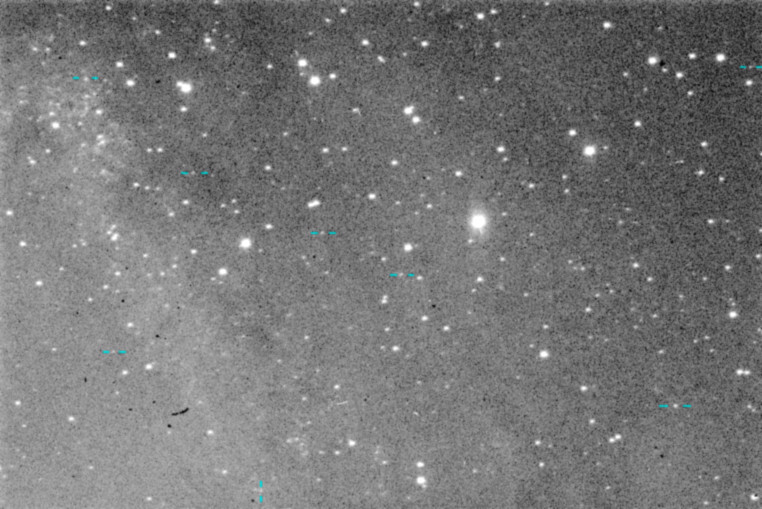

The great Andromeda Galaxy, M31, is very similar in structure to our own Milky Way but is significantly bigger. It is the largest galaxy in the Local Group, our galaxy comes second and M33 in the constellation of Triangulum is the third biggest. Although it is 780 kiloparsecs (about 2.5 million light-years) away it is still close enough to see many objects which are familiar to us in our galaxy including emission nebulae, variable stars, star-forming regions and, in particular, globular clusters in orbit around it. Like our galaxy, M31 has a few hundred globular clusters. Unlike those of our galaxy, none of them are anywhere near being visible to the naked eye and, due to their distance, they are all fainter than 16th magnitude so need a moderately large telescope to make them visible. For the same reason they are not resolved into their constituent members but instead look like a very slightly fuzzy star.
In this image the globular clusters are marked to distinguish them from stars, a fair number of which are themselves located in M31. The background glow coming from billions of unresolved stars in the galaxy is clearly visible. Many other structures, such as open clusters and emission nebulae, also show up in this image. The table below gives the names, brightness and positions of the globular clusters as they appear from top to bottom in the image.
| Name | V mag | Right Ascension | Declination |
|---|---|---|---|
| B226D | 17.89 | 00h43m14.80s | +41°58'43" |
| DA069 | ~18 | 00h44m34.8s | +41°53'27" |
| B243D | 18.05 | 00h44m18.0s | +41°52'10" |
| B238D | 18.05 | 00h43m59.9s | +41°51'47" |
| B235D | 17.93 | 00h43m48.8s | +41°51'26" |
| B245D | 18.22 | 00h44m20.4s | +41°47'32" |
| B356 | 17.34 | 00h43m10.4s | +41°50'31" |
| B108D | 18.80 | 00h43m57.0s | +41°45'35" |
| Date and time of observation | 2018-08-25 00:10 UT |
| Telescope | 0.4m f/6.5 Dilworth-Relay |
| Camera | SBIG-8XE CCD |
| Filter | Johnson V |
| Exposure | 600s |
| Centre of image | RA 00h43m52.0s Dec +41°51'44" |
| Image dimensions | 18.2 arcmin × 12.1 arcmin |